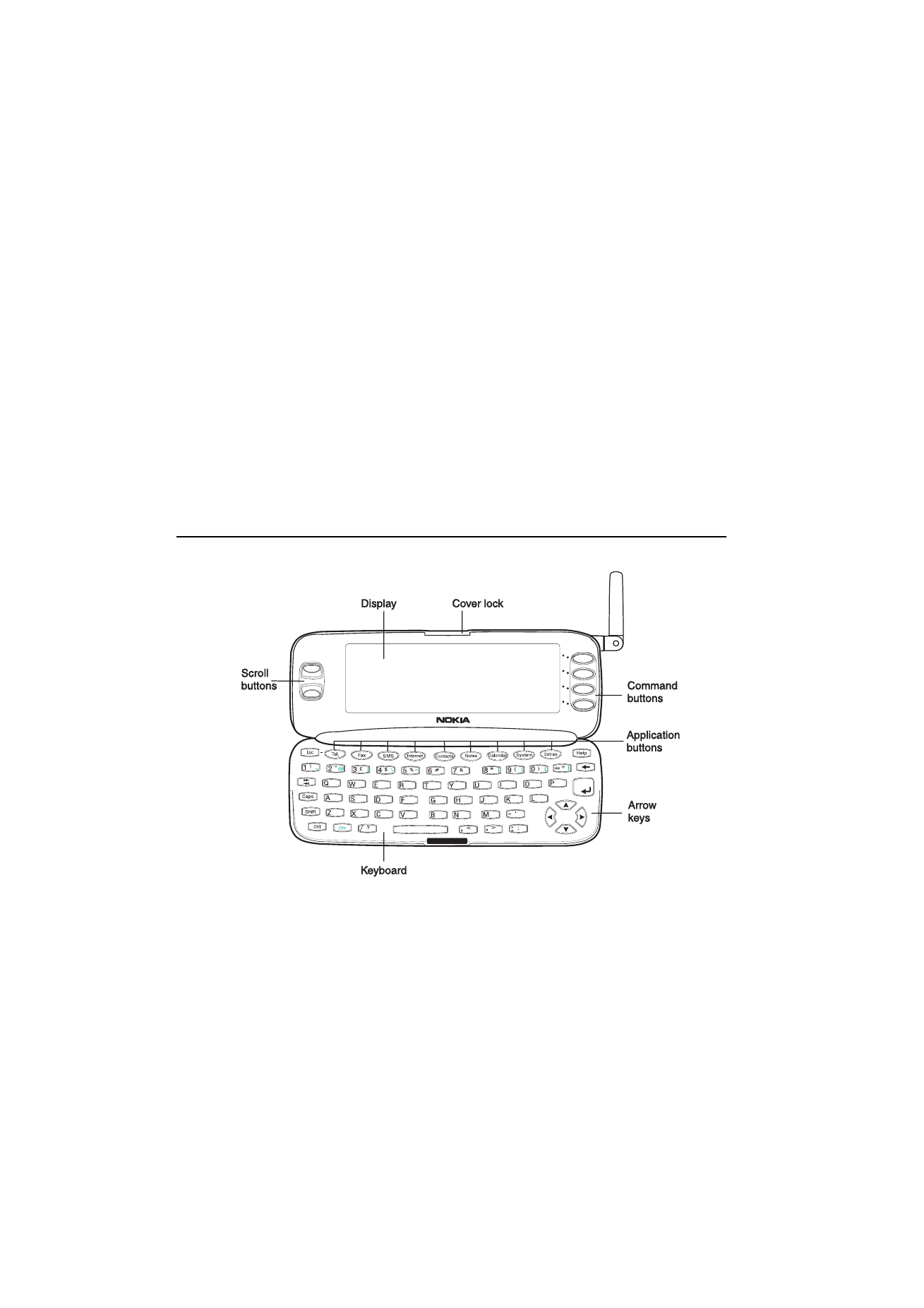
Using the battery
Use only batteries approved by the communicator
manufacturer. With approved chargers and acces-
sories, the battery can be charged continuously.
The battery need not be fully discharged before
recharging. When a charger is not in use, discon-
nect it from the power source.
The battery can be charged and discharged hun-
dreds of times, but it will eventually wear out.
When the operation time (talk-time and standby
time) is noticeably shorter than normal, it is time
to buy a new battery.
Temperature extremes will affect the ability of
your battery to charge: it may require cooling or
warming first.
Battery operation time is affected by the follow-
ing: whether both interfaces are on, radio signal
strength, various phone settings, and the length
of the communicator interface’s screen blanker
period (set in System application’s settings, see
chapter 10 "System: System settings" on page
10-1).
It is recommended always to keep a charged bat-
tery in the communicator. Keeping the battery
charged maximises the lifetime of the backup bat-
tery supplying power to the communicator’s real-
time clock. In case the backup battery is drained,
it may be replaced by qualified personnel.
Always close the device cover before removing
the battery. Closing the cover will save all data.
Figure 2-7
Figure 2-8

2-6
Communicator interface
1998 Nokia Mobile Phones. All Rights Reserved.
Note:
• Use the battery only for its intended purpose.
• Never use any charger or battery that is
damaged or worn out.
• Do not short circuit the battery. Accidental
short circuiting can occur when a metallic
object (coin, clip or pen) causes direct
connection of the + and - terminals of the
battery, for example, when you carry a spare
battery in your pocket or purse. Short
circuiting the terminals may damage the
battery or the connecting object.
• Leaving the battery in hot or cold places, such
as in a closed car in summer or winter condi-
tions, will reduce the capacity and lifetime of
the battery. Always try to keep the battery
between +15° C (+59° F) and +25° C (+77° F).
A communicator with a hot or cold battery
may temporarily not work, even when the
battery is fully charged. Li-Ion batteries’
performance is particularly limited in temper-
atures below 0° C (+32° F).
• Dispose of used batteries in accordance with
local regulations. Recycle! Do not dispose of
batteries in a fire!